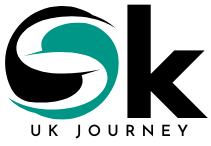A bank account is an essential tool for managing your finances securely and efficiently. Whether you’re opening your very first account or switching to a new bank, understanding the process can help you make the best decision and avoid unnecessary stress. This guide walks you through the steps, explores the types of accounts available, and offers tips for choosing the most suitable banking option for your needs.
Why You Need a Bank Account
Having a bank account offers many benefits. Aside from securely storing your money, it enables you to:
- Receive payments, such as salaries or financial aid.
- Pay bills, rent, or make everyday purchases with ease.
- Track your spending through statements and online apps.
- Save for future goals or emergencies.
- Build financial history, which is crucial for services like loans or credit cards.
Now that we’ve established why bank accounts are important, here’s how to get one step by step.
Steps to Get a Bank Account
The process of opening a bank account varies slightly depending on the bank or country, but these are the universal steps to follow:
Step 1: Research Your Options
Before opening an account, take time to compare banks and their offerings. Some banks cater to specific needs, like student accounts or savings products, while others focus on digital convenience. Consider what features matter most to you:
- Are mobile banking apps important?
- Do you need access to physical branches?
- Are there fees or minimum balance requirements?
- Does the account include perks like cashback, interest, or savings tools?
Traditional banks and online-only banks differ significantly in their services, so weigh the pros and cons.
Step 2: Gather Necessary Documents
Banks require documentation to verify your identity and address. The exact requirements may vary, but you’ll generally need:
- Proof of Identity (passport, driver’s license, or national ID card).
- Proof of Address, such as a utility bill, tax document, or rental agreement.
- For specific accounts, some banks might request proof of income (a payslip or job contract) or student status (enrollment verification).
Having these documents ready will speed up the application process.
Step 3: Choose Between Online or Branch Application
Most banks now allow you to apply online, saving time and effort. However, some providers may still require you to visit a branch. Here’s what to expect from both options:
- Online Applications involve filling out forms via the bank’s website or app. You’ll also need to upload scanned copies of your documents.
- Branch Visits allow you to speak with a bank representative, which can be helpful if you have questions or need personalized recommendations.
Choose the method that aligns with your preferences and convenience.
Step 4: Complete the Application Process
Submit your forms and supporting documents. Depending on the bank, this may be done in person, online, or even by mail. After reviewing your application, the bank will notify you of approval.
Step 5: Start Using Your Account
Once approved, you’ll receive your account details, including your account number and (if applicable) sort code. Activating your debit card and setting up online banking access are often the final steps before you can start making transactions.
Types of Bank Accounts
There are several types of bank accounts tailored to different financial needs. Understanding these options will help you pick the one that suits your situation best.
1. Checking or Current Accounts
This is the go-to choice for everyday banking needs. Checking or current accounts allow you to deposit and withdraw money freely, make payments, and track expenses via checks, debit cards, or online banking apps.
2. Savings Accounts
Designed for saving money over time, these accounts offer interest on your balance. They may have limitations on withdrawals but are perfect for setting aside funds for specific goals.
3. Student Accounts
Specifically geared towards young adults in higher education, these often come with benefits like waived fees, low overdraft rates, and budgeting tools.
4. Business Accounts
For entrepreneurs or small businesses, a business account simplifies transactions such as receiving payments, paying suppliers, and managing operational costs.
5. Joint Accounts
These shared accounts are great for couples, families, or business partners managing shared finances. They provide multiple account holders access to funds.
6. International or Multi-Currency Accounts
If you frequently deal with foreign currencies or live abroad temporarily, these accounts help you manage multiple currencies efficiently.
Tips for Choosing the Best Bank Account
Choosing the right account requires careful thought. Use these tips to find the best fit for your needs:
- Compare Fees
Look out for hidden charges, such as monthly maintenance fees, ATM withdrawal costs, or overdraft penalties. Choose a bank with clear and fair pricing. - Look for Interest or Rewards
Some accounts offer bonuses like cashback on spending, higher interest rates on savings, or rewards for signing up. - Prioritize Convenience
Consider how easily you’ll be able to access your account. Are mobile banking features easy to use? Is there a branch nearby if you prefer in-person support? - Consider Reputation and Customer Service
Read reviews or ask for recommendations to ensure the bank has a good history of customer support and reliability. - Check for Added Features
Look for banks offering tools like budgeting assistance, real-time notifications, and fraud protection.
Common Questions When Getting a Bank Account
Do I need a credit check to open an account?
Most basic accounts don’t require a credit check. However, checking accounts with overdraft features or loans might.
Can I open an account with no previous banking history?
Yes, many banks offer starter accounts that don’t require a credit history. These are great for students or young adults.
How long does it take to open an account?
With online applications, you can sometimes open an account within minutes. For branch appointments, the process may take a few days.
Final Thoughts
Getting a bank account is a straightforward process when approached with preparation. Whether you’re looking for a reliable daily account or specific features like savings options or multi-currency tools, the right choice will simplify managing your money.
By researching banks, gathering required documents, and understanding your financial needs, opening an account can be hassle-free. Start exploring your options today and enjoy the benefits of secure, organized finances.

